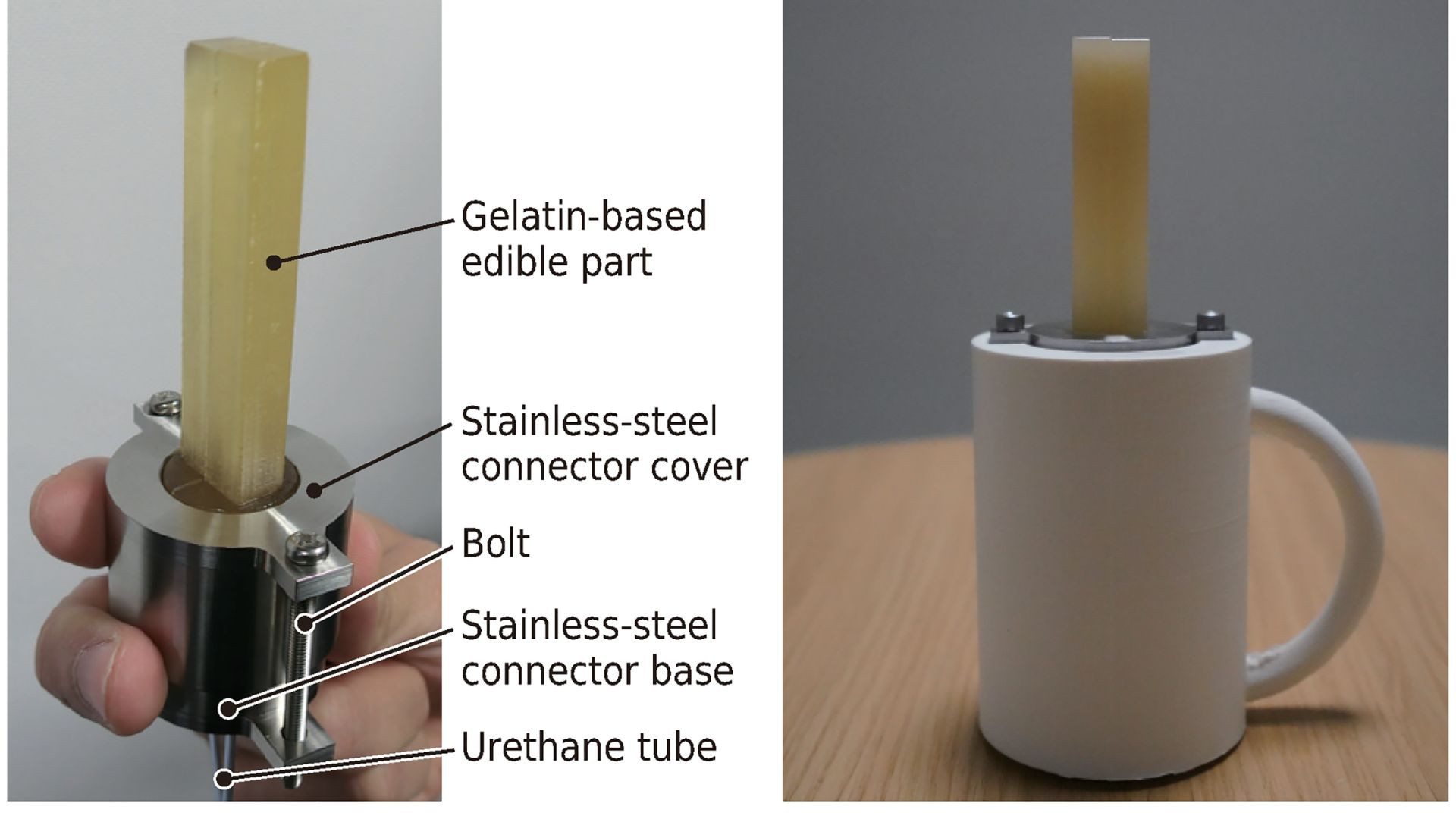
Scientists from the University of Electro-Communications in Japan and Osaka University have introduced a pioneering handheld device to explore HERI "human-edible robot interaction."
This innovative device named HERI, powered by pneumatics (the physical science of compressing air), marks a significant leap in understanding how humans interact with edible robots. To create the "edible" component central to HERI, researchers created a gummy candy-like substance enriched with an infusion of sugar and apple juice for added flavor.
According to the team, these observations offer crucial insights into the potential applications of edible robots across diverse domains, including medicine and culinary entertainment.
The details of the team's research were published in the journal Plos One.
Furthering research
Recent studies on edible robots have focused on reducing environmental impact and designing medical robots with minimal negative effects on humans. However, these studies have neglected the sensory aspects of consuming robotic parts. For instance, while some edible actuators have been developed, they lack the desired texture for easy biting and chewing. In contrast, the current research delves into edible robots' taste and eating sensations.
Researchers focused on pioneering the exploration of psychological and cognitive effects when consuming moving robots. The team developed a pneumatically driven edible robot optimized for bite and chew sensations using gelatin and sugar.
Through preliminary and main studies, they evaluated participants' responses to the robot's movement, animateness, taste, texture, appetite, and sense of guilt. According to researchers, this foundational research opens avenues for further exploration in HERI.
The study evaluated human perceptions of visualized movements and consumption of edible robots. Participants perceived greater animateness with lateral vibration than vertical. The taste between moving and stationary robots remained consistent, but perceptions differed during consumption.
Thorough process
In the study, the team's first experiment recorded the participants' impressions of the robot's movements, offering insights into the perceived animateness and its potential impact on consumption. In the second experiment, participants compared consuming the robot in motion to a stationary state, revealing variations in taste perception and texture sensation while biting and chewing.
After allowing the liquid to cure in molds equipped with two hollow airways, the researchers affixed the resulting snack to a holder resembling a coffee mug. This innovative design enabled them to manipulate the gelatin's movement by injecting air through the airways. Alternating airflow between the tubes induced a side-to-side wagging motion, while simultaneous inflation created a pulsating movement, albeit slightly unsettling.

Following this setup, taste tests commenced. Sixteen students from Osaka University were instructed to grasp the device containing their assigned wriggling soft robot morsel, place the edible portion in their mouth, allow it to move for 10 seconds, and then bite down. A control group also consumed a conventional, stationary gelatin gummy.
Subsequently, each volunteer completed a survey, addressing questions regarding their perception of animateness, emotional response, perceived intelligence, and guilt towards the consumed item. The results indicated that the meal experience could be influenced by the movement of the food in one's mouth.
Participants' impressions of animateness were stronger with lateral vibration than vertical. The taste remained consistent between moving and stationary robots. However, perceptions varied during consumption. Unique onomatopoeic descriptors were used for texture, differing between moving and stationary robots. "Our findings showed that humans perceive specific impressions when eating moving objects. The experimental results provide insights into the effect of the movements of a robot on humans in practical applications of edible robots," said the study.












